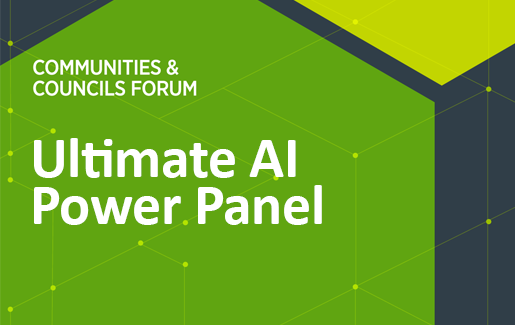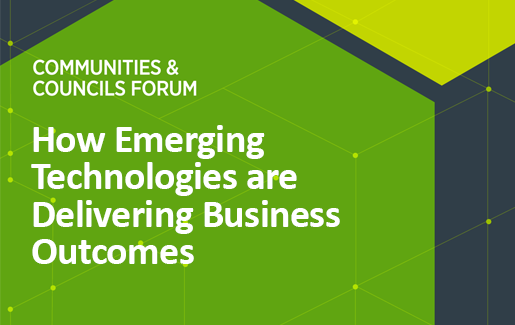 The possibilities for artificial intelligence in the market are almost endless—and so is the business opportunity, even if you’re just getting started, according to members of an AI Power Panel during CompTIAs virtual Councils & Communities Forum, held March 17.
The possibilities for artificial intelligence in the market are almost endless—and so is the business opportunity, even if you’re just getting started, according to members of an AI Power Panel during CompTIAs virtual Councils & Communities Forum, held March 17.
Three panelists laid out the keys to AI success and how to get started. Here’s a look at what they said:
Manage Expectations, Focus on the Problem
One key to AI success is to have realistic explanations of what AI can do—and what you can do, said Uday Tatiraju, tech lead, principal software engineer, at Oracle and vice chair of CompTIA’s AI Advisory Council.
“Identify up front what you want to get out of AI/machine learning. Does it make sense? It’s important that you continuously monitor and improve the model. Staleness of an AI model is bad for success,” Tatiraju said.
John Sipple, senior software engineer at Google, said it’s better to focus on the business problem, not the technology, to be successful with AI.
“Try to understand the problem, then look at the data and apply a solution in small scale. Develop proof of concept,” Sipple said. “Once you’ve established that the results are favorable, the next step is considering the software engineering aspects behind it.”
It’s also important to present to users and stakeholders what the user interface will look like, Sipple said. “What I found often with getting out a user interface is that you’ll be surprised with [users’] inputs. They’ll ask questions, they’ll help you refine whatever solution you’re working on. It also keeps users engaged early on,” he said.
Another key to AI success, said Vibha Sinha, technical program manager at Facebook, is to consider AI and machine learning projects in the same vein as software projects. Similar to the continuous need to update and patch software, AI models must continuously improve models as more data is received and more requirements are factored in.
“You need to have projects to transform from quick prototypes to where you can scale up and models can improve,” Sinha said. “As you establish use cases, you show there’s business value. It’s important to have software development basics in place and it’s extremely important to not lose sight of the right software basics.”
AI Is a Heuristic, Iterative Process
James Stanger, CompTIA’s chief technology evangelist and moderator for the AI Power Panel, said that “actionable intelligence” is also a key to AI success, asking the panelists on how to take action on the intelligence created by AI algorithms.
Along those lines, it’s important that the business executives recognize that AI and machine learning can’t perform miracles—at least not right away, said Facebook’s Sinha. Success is measured over time, starting with some level of accuracy from the initial build and marking improvements in subsequent builds.
“Projects that work really well over time have both technical and businesses knowing what the system does and how it improves over time. That is both well understood and established,” she said. “And that both sides work towards providing the right ingredients so that the system really improves.”
Oracle’s Tatiraju agreed that it’s important to not be overly ambitious at the beginning and to view AI as a heuristic and iterative process.
“AI is not a magic bullet and using AI won’t solve all the problems. In fact, you have to find the right use cases and the right problems to apply machine learning,” he said. “Start small and incrementally scale. Use existing data, apply simple, statistical techniques, take it to production, learn from it iteratively and continuously monitor and improve on it.”
Start with Clean Data, Proof of Concept
Starting with a simple, straightforward AI project could yield initial results within three months, said Google’s Sipple.
“You never want to start with the most sophisticated and most difficult algorithms and deep learning from the get-go. You want something that gets you into production and is very feasible to see results within a short time,” he said.
The panelists offered further detail on how to get started, building a proof of concept.
First, sit down with the customer or stakeholders and try to get an intimate understanding of their business problem, Sipple said.
“What are they trying to solve and why can’t it get done with their current approaches? Sometimes you find that AI is not always the best solution and others work just as well,” he said.
Once you understand the problem, you need to understand the data. “What data are the stakeholders bringing at that point? Once you have a good grasp of the problem and the data available, then you can start forming hypothesis to solve problem. Then you work on proof of concept,” Sipple said.
Added Oracle’s Tatiraju, “You can’t blindly say I’m going to use machine learning tomorrow. That will take you nowhere. Look at the existing data to start to see patterns and insights. Then maybe can apply machine-learning techniques to automate some processes.”
All the panelists agreed that data is the foundation for any AI success, the better the data, the better the results. Which means it’s important to thoroughly test and scrub the data to remove any inherent biases.
“Whenever you start on any AI project, the most important thing is understanding what the data is,” Sinha said. “Are there attributes in the data to make it unfair? A lot of work involved is determining what could be sources of problems in data and correcting it.”
Missed CompTIA’s virtual Councils & Communities Forum? No worries, you can watch the whole event here.

 Add CompTIA to your favorite RSS reader
Add CompTIA to your favorite RSS reader

